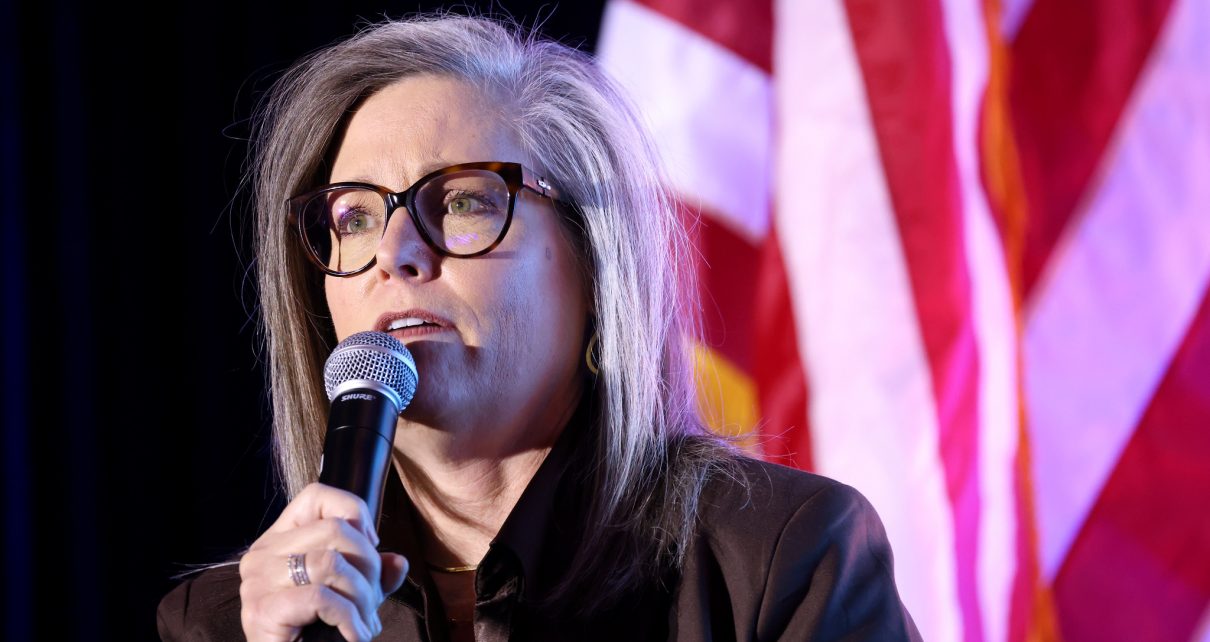
Governor Katie Hobbs at the 2025 Legislative Forecast Luncheon hosted by the Arizona Chamber of Commerce & Industry at the Phoenix Convention Center in Phoenix, Jan, 10, 2025. (Photo: Gage Skidmore)
Hobbs’ Medical Debt Relief Program Lacks Accountability
Program to erase medical debt based on proprietary algorithms and internal metrics
By Christy Kelly, July 17, 2025 4:27 pm
Governor Katie Hobbs made headlines when she announced that $429 million in medical debt would be erased for over 352,000 Arizonans, with no applications required. However, the program is likely to raise red flags among legislators due to its lack of accountability.
The debt relief stems from a partnership between the state and Undue Medical Debt, a nonprofit funded by $10 million in federal COVID-19 relief dollars made available through the American Rescue Plan Act (ARPA). The money is used to purchase large portfolios of medical debt at deep discounts, which are then forgiven. According to the Governor’s Office, it’s a strategy intended to promote economic stability by offering struggling Arizonans a fresh start. Hobbs is touting the initiative as a core component of her administration’s broader “Arizona Promise” plan, which addresses affordability and economic hardship in the wake of the pandemic.
Despite the laudable goal, the program’s execution raises concerns due to its lack of legislative oversight. Without a competitive bidding process or formal mechanism in place to verify eligibility or to monitor outcomes, the potential for misuse remains high. The Governor’s Office has been directing funds to Undue Medical Debt without input from the legislature, and by extension, from the public. The program hinges entirely on the internal metrics and proprietary algorithms of a private nonprofit, with limited transparency about which hospitals or debt buyers participated, how eligibility was determined, or what patient data was used.
So far, $2 million in ARPA funds has been spent to erase $429 million in medical debt, with up to $2 billion in forgiveness expected if the full $10 million is used. Undue Medical Debt confirmed the lack of an application process, identified recipients using hospital financial records and third-party demographic models. Individuals are not required to apply and are notified only by letter, which includes a unique “gift ID.”
“We don’t ask for any personally identifiable information… All we’ll ask for is the gift ID that is included on the letter,” said Courtney Story, vice president of Undue Medical Debt, in an interview with ABC15.
The ARPA dollars allocated for this program were intended to support long-term recovery in states still recovering from the financial impact of COVID-19. However, the “spend first, audit later” approach has led to documented instances of waste, fraud, and abuse in other states. The U.S. Treasury’s Inspector General has flagged dozens of ARPA misuse cases nationwide, including misallocated housing grants and funds being redirected to unrelated local projects. Although the medical debt relief plan has not been flagged, the potential for fraud and abuse remains high, particularly given the lack of state oversight.
Despite the state touting a high return on investment, with more than $200 of medical debt erased for every $1 in program funds spent, questions remain.
Several Arizona legislators confirmed to the Globe off the record that the program was designed and implemented solely by Governor Hobbs’ use of discretionary ARPA funds. According to them, despite the initiative appearing to operate with minimal guardrails or external oversight, it may be within her right to do so. The Globe will monitor the program and update the story as more information becomes available.
- Galvin, Lesko Join Constituents Calling to End Fed Oversight of Sheriff - July 18, 2025
- Hobbs’ Medical Debt Relief Program Lacks Accountability - July 17, 2025
- Hoffman, Bowyer, Lead Calls for Answers to Cyber Hack Incident - July 16, 2025




